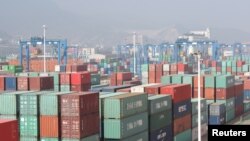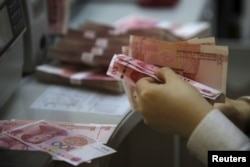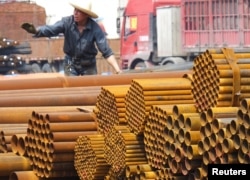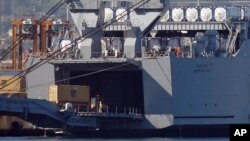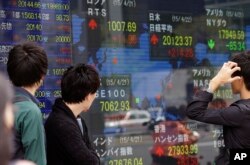Chinese exporters saw surprisingly good performance in March as the improved flow of goods out of the country gave a boost to local authorities and a lift to world stock markets.
Exports rose to 11.5 percent in March after coming in at minus 20.4 percent in February. This is the first time in nine months that Chinese exports have risen.
Stock markets in Shanghai, Hong Kong and Europe rose following the announcement of Chinese trade data in Beijing.
But economists were hesitant to declare the one-month bump a sign of a turnaround in the country’s exports. Most of them expect China’s foreign trade performance to remain sluggish throughout 2016.
Overall, exports in the first quarter of 2016 were still 4.2 percent below 2015 figures. In addition, imports declined by 1.9 percent in March, and 8.2 percent in the January-March period, suggesting the Chinese economy is still unable to buy more from world markets.
“The weakness of exports in February and their strength in March is almost entirely the result of firms closing for the Chinese New Year holiday,” Mark Williams, chief Asia Economist at Capital Economics, said, adding, “The underlying picture is that China's exports continue to fall in dollar terms.”
Commenting on the figures Huang Songping, spokesman for China’s General Administration of Customs, was restrained, citing a better policy environment and the low base of exports in March last year as reasons behind the dramatic rise.
“Exports this March have shown significant growth compared to the low base last year. On the other hand, a favorable policy environment is also the reason for the export improvement,” he said.
Chinese exporters did poorly compared to the past in their top two markets, the European Union and the United States, in the first quarter.
“One important reason why export values are so low is that commodity prices have fallen dramatically. China is a net commodity importer, but it still exports substantial amounts so the value of exports has been affected,” Williams said.
Weak export growth predicted
Yan Se, professor of economics at Peking University’s Guanghua School of Management said export growth would continue to remain weak this year because there was little sign of economic recovery in China’s main markets, the European Union, the United States and Japan.
“[The] world economy is still sluggish, and external demand is weak. This means Chinese exports will continue to remain sluggish,” he said.
The decline in Chinese imports, which is affecting the world economy, is caused by low internal demand in China, which is going through an economic slowdown, Yan Se said.
“Chinese industries have built up huge inventories. This has also resulted in low demand for exports,” he said.
North Korean trade rises
Despite the recent introduction of U.N. sanctions, China saw an increase in its exports to North Korea, with two-way trade growing by 12.7 percent in the first three months of the year, compared with the previous year.
The total value of trade between the two countries was $1.2 billion. Just last week, China’s Commerce Ministry announced it was banning the import of North Korean gold and rare earths as well as the export of jet fuel and other oil products used to make rocket fuel.
China is North Korea’s most important trading partner and ally.
China’s Foreign Ministry defended the rise in trade even as sanctions were put into place.
Foreign Ministry spokesman Lu Kang said China would continue to uphold sanctions, but also maintain what he called “normal relations” with North Korea outside the framework of the sanctions.
“China as a permanent member of the U.N. Security Council will strictly, without taking shortcuts, implement all of the resolutions passed by the U.N. Security Council. This goes without question.” Lu Kang said. “Of course for things outside of the U.N. Security Council sanctions framework, China, along with other countries, will maintain normal relations with North Korea, this is also not for dispute.”




